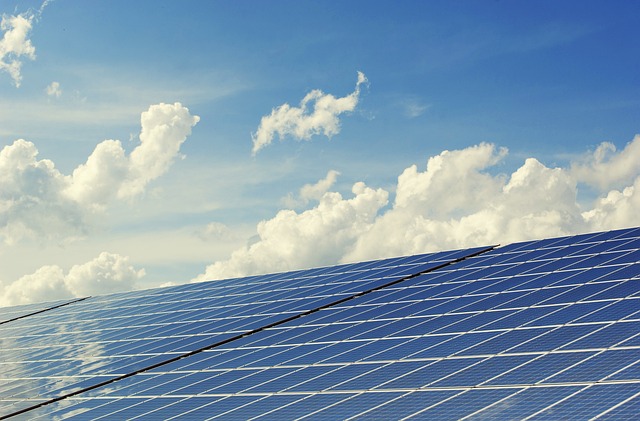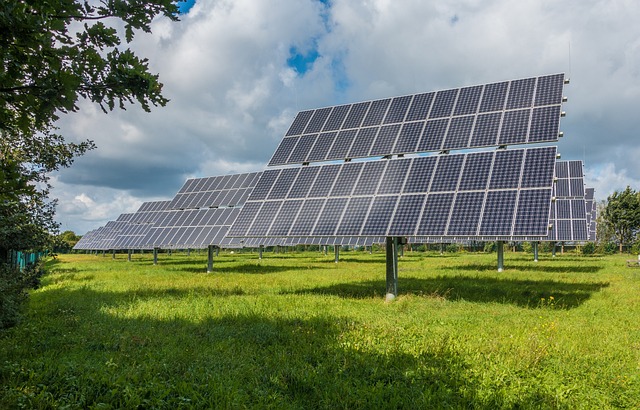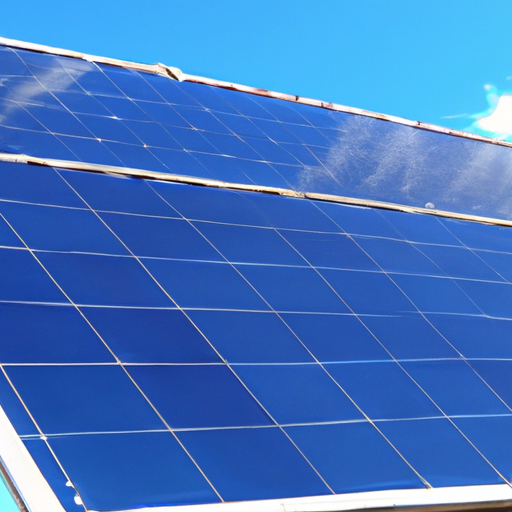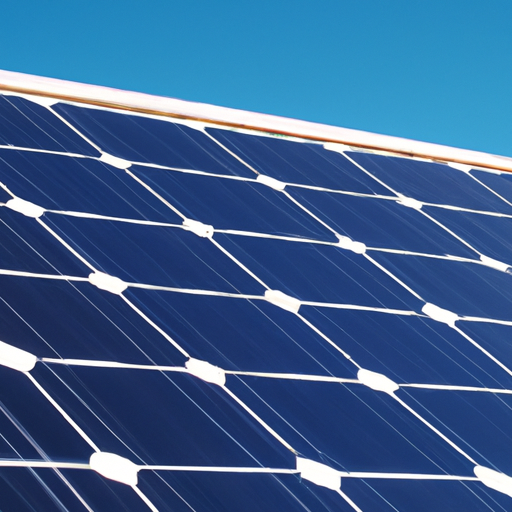Have you ever wondered how long solar panels last? Well, you’ve come to the right place! In this article, we will explore the lifespan of solar panels and answer all your burning questions.
From the moment you start your solar journey, you’ll be equipped with the knowledge and resources to ensure the longevity of your solar panels. We’ll discuss factors that affect their lifespan, maintenance tips to extend their durability, and the average lifespan you can expect from your investment. So, if you’re ready to learn more about how long solar panels can last and how to maximize their efficiency, keep reading! Solar panels are a long-term investment, so understanding their lifespan is crucial for anyone considering solar power as an option for their home or business. In this article, we will delve into the factors that affect the lifespan of solar panels, the signs of aging to watch out for, how to extend their lifespan, and the benefits they bring. We will also address common misconceptions, explore case studies of long-lasting solar panel installations, and discuss future advancements in solar panel technology. By the end of this article, you will have a comprehensive understanding of the lifespan of solar panels and be equipped to make informed decisions for your solar power journey.

This image is property of pixabay.com.
Factors Affecting the Lifespan of Solar Panels
The quality of materials used, the installation and maintenance practices employed, and the climate and environmental conditions where the solar panels are located all play significant roles in determining their lifespan.
Quality of Materials Used
The durability of solar panels heavily depends on the quality of the materials used during their manufacturing process. This includes the type of silicon cells, the tempered glass covering, and the protective backing. It’s crucial to invest in panels made with high-quality materials to ensure optimal performance and longevity.
Installation and Maintenance Practices
Proper installation and regular maintenance are essential for maximizing the lifespan of solar panels. Incorrect mounting, inadequate sealing, or using subpar connectors can reduce their efficiency and potentially lead to premature failure. It’s crucial to have solar panels installed by certified professionals and follow the manufacturer’s maintenance guidelines.
Climate and Environmental Conditions
The climate and environmental conditions in which solar panels are exposed also impact their lifespan. Extreme weather events, such as hailstorms, hurricanes, or heavy snowfall, can cause physical damage to the panels. Additionally, the presence of excessive dust, dirt, or debris can obstruct sunlight and decrease the panels’ efficiency over time. Understanding the local climate and taking appropriate measures to protect the panels can prolong their lifespan.
Average Lifespan of Solar Panels
Solar panels generally have a long lifespan, but the specific type of panel can influence how long they last. The three most common types of solar panels are poly-crystalline panels, mono-crystalline panels, and thin-film panels.
Poly-crystalline Panels
Poly-crystalline solar panels are made of multiple crystals of silicon. They have an average lifespan of 25 to 30 years. While they are generally less expensive than other types, their efficiency may decrease slightly over time.
Mono-crystalline Panels
Mono-crystalline solar panels are made of a single crystal of silicon. They have a similar average lifespan of 25 to 30 years but tend to have a higher efficiency rate compared to poly-crystalline panels. This makes them a popular choice for those looking to maximize energy production from limited roof space.
Thin-film Panels
Thin-film solar panels are made by depositing thin layers of photovoltaic material onto a substrate. They have a slightly shorter average lifespan of 20 to 25 years but offer flexibility in terms of installation and can be integrated into various surfaces, such as curved roofs or building facades. However, their efficiency is typically lower compared to crystalline panels.
It’s important to note that these average lifespans can vary based on the quality of the materials used and the installation and maintenance practices employed. Regular monitoring of the panels’ performance and early detection of any issues can help maximize their lifespan.

This image is property of pixabay.com.
Signs of Aging in Solar Panels
As solar panels age, certain indicators can help identify any performance or deterioration issues. Here are the signs of aging to watch out for:
Decreased Energy Production
If you notice a significant decrease in the amount of electricity your solar panels are generating, it could be a sign of aging. While some decline in performance over the years is expected, a sudden and drastic drop usually indicates that the panels need attention. Monitoring energy production regularly can help identify any potential issues early on.
Physical Degradation
Physical degradation can manifest in several ways. Cracks or damage to the glass covering, discoloration of the cells, or any other visible signs of wear and tear are indications that the panels may be nearing the end of their lifespan. Regular visual inspections can help identify any physical issues and prompt necessary repairs or replacements.
Warranty Expiration
Most solar panels come with warranty coverage, typically ranging from 20 to 25 years. If your panels’ warranty is about to expire, it may be wise to consider having them inspected by a professional to ensure they are still functioning optimally. Taking proactive measures before the warranty expires can help prevent future complications.
Extending the Lifespan of Solar Panels
While solar panels do have a finite lifespan, there are measures you can take to extend their longevity. Regular inspection and cleaning, proper maintenance, and replacing faulty components are key to maximizing the lifespan of your panels.
Regular Inspection and Cleaning
Regularly inspecting your solar panels for any signs of physical damage or deterioration is crucial. This can be done visually or by hiring a professional to conduct a comprehensive inspection. Additionally, keeping the panels clean by removing any accumulated dust, dirt, or debris is essential to ensure they receive maximum sunlight exposure.
Proper Maintenance
Following the manufacturer’s maintenance guidelines is essential for keeping your solar panels in good condition. This may include tightening any loose connections, checking the wiring and inverters, and ensuring the mounting system is secure. Regular maintenance helps prevent small issues from developing into larger problems that could compromise the panels’ performance.
Replacing Faulty Components
Solar panels are composed of various components, including the cells, wiring, inverters, and connectors. If any of these components are faulty or malfunctioning, it’s important to replace them promptly. It’s advisable to consult with a professional to identify and replace any defective parts to ensure the entire system continues to function optimally.

This image is property of pixabay.com.
End-of-Life Options for Solar Panels
At the end of their lifespan, solar panels can be handled through several environmentally responsible options: recycling, reusing, or disposal.
Recycling
Solar panel recycling involves the separation and recovery of valuable materials, such as glass, silicon, and metals, for reuse in new products. Many manufacturers and recycling companies offer programs specifically designed for handling end-of-life solar panels. Recycling not only reduces waste but also helps recover valuable resources.
Reusing
In some cases, solar panels can still hold value even after their primary function has diminished. They can be repurposed and used in other applications, such as community solar projects, off-grid installations, or for charitable organizations in need of electricity. Exploring reuse options before disposal can help minimize waste and extend the panels’ lifespan.
Disposal
If the solar panels cannot be recycled or reused, proper disposal is necessary. Local regulations and guidelines for disposing of electronic waste should be followed to minimize environmental impact. Responsible disposal ensures that harmful substances, such as lead or cadmium, are not released into the environment.
Benefits of Long-Lasting Solar Panels
Investing in long-lasting solar panels brings several benefits, including financial savings, positive environmental impact, and reliability.
Financial Savings
Long-lasting solar panels provide a significant return on investment over their lifespan. By producing clean electricity and reducing dependence on the grid, homeowners and businesses can save on energy bills. Moreover, some areas offer incentives, tax credits, or net metering programs that further enhance the financial benefits of solar power.
Environmental Impact
Using solar panels to generate electricity significantly reduces greenhouse gas emissions and reliance on fossil fuels. Solar power is a clean, renewable energy source that contributes to a healthier environment and a more sustainable future. Long-lasting panels ensure this positive environmental impact continues for years to come.
Reliability
Long-lasting solar panels provide a reliable source of electricity. With proper maintenance and regular inspections, they can continue generating electricity even after their warranty period expires. This reliability ensures a stable energy supply and reduces the risk of unexpected power outages.

Common Misconceptions About Solar Panel Lifespan
There are a few common misconceptions about the lifespan of solar panels that we would like to address.
Solar Panels Stop Working After a Specific Time
Contrary to popular belief, solar panels do not suddenly stop working once they reach the end of their average lifespan. While their efficiency may have declined after years of use, they can still produce electricity beyond their expected lifespan. Regular inspection and maintenance can help ensure they continue functioning optimally.
Solar Panels Are Not Worth the Investment
Another misconception is that solar panels are not a worthwhile investment due to their limited lifespan. However, when considering the financial savings, environmental impact, and long-term reliability they bring, solar panels often provide a favorable return on investment. It is important to view solar panels as a long-term solution rather than a short-term fix.
Case Studies: Long-Lasting Solar Panel Installations
To illustrate the longevity of solar panels, we will explore three case studies: residential, commercial, and governmental installations.
Residential
In a residential setting, the Jones family installed solar panels on their rooftop over 30 years ago. With regular maintenance and inspections, their panels still continue to generate a significant portion of their electricity. The investment they made in long-lasting panels has proven to be financially and environmentally beneficial over the years.
Commercial
A large commercial building installed a massive solar array on its rooftop a decade ago. Despite the harsh weather conditions and heavy energy demands of the building, the panels have remained highly efficient, demonstrating the durability of long-lasting solar panels in a commercial setting.
Governmental
A governmental agency installed solar panels in a solar farm over 25 years ago. With proper maintenance and ongoing monitoring, the panels have consistently generated clean electricity for their community, showcasing the long-lasting sustainability and positive environmental impact of solar power on a larger scale.

Future Advancements in Solar Panel Technology
Advancements in solar panel technology are constantly being made, driving increased efficiency and enhanced durability.
Increased Efficiency
Researchers are continually developing more efficient solar panel designs, such as multi-junction or tandem cells, which can achieve higher conversion rates of sunlight into electricity. These advancements aim to maximize energy production and improve the overall efficiency of solar panels.
Enhanced Durability
Scientists are also working on developing new materials and coatings to enhance the durability of solar panels. By improving their resistance to physical damage, such as hail, and increasing their lifespan, future solar panels will withstand harsher weather conditions, reducing maintenance needs and increasing overall performance.
Integration with Energy Storage
Solar panels are increasingly being combined with energy storage systems, such as batteries, to provide a reliable and uninterrupted power supply. This integration allows excess solar energy generated during the day to be stored and used during the night or during periods of low sunlight. The integration of solar panels with energy storage systems will further enhance the reliability and independence of solar power.
Conclusion
Solar panels have become a popular choice for those looking to transition to clean, renewable energy sources. Understanding the factors that affect their lifespan, how to identify signs of aging, and how to extend their lifespan through regular maintenance and proper care is crucial for maximizing their efficiency and effectiveness. The benefits of long-lasting solar panels, such as financial savings, positive environmental impact, and reliability, make them a worthwhile investment for homeowners and businesses alike. By dispelling common misconceptions and exploring case studies of long-lasting solar panel installations, we have shown that solar panels can continue to provide clean electricity well beyond their average lifespan. With ongoing advancements in technology, solar panels are poised to become even more efficient and durable, offering a brighter and more sustainable future for all. So, if you’re considering solar power, rest assured that with proper care, your solar panels will last for many years to come, providing you with clean and reliable energy.

